“I didn’t choose to dance; Dance chose me,” says internationally acclaimed Malaysian dancer Datuk Ramli Ibrahim, echoing American modern dancer-choreographer Martha Graham. This is one of Ramli’s favorite quotes as she stands high in the world of Indian classical dance. As the founder of Sutra Dance Theater in Malaysia, Ramli has been demonstrating an unparalleled dedication to taking the subtle and dynamic style of Odissi dance to a global audience.
Ramli was recently in India to participate in Naman 2024, a prestigious annual Odissi dance festival organized by Nrityanthar Academy of Performing Arts in Bengaluru. “As a dancer, you are the interpreter. The more you give, the more you shine. Dance or the goddess of dance is your destiny. You must be crazy. This is divine madness,” says Ramli during a fascinating conversation with Bengaluru dancers.
Winner of the Sangeet Natak Akademi Award for Odissi in 2012 and the Padma Shri in 2018 for his overall contribution to Indian classical dance, Ramli adds an important layer of depth to Naman 2024 as a cultural icon with four decades of international experience .
Even at the age of 71, Ramli does not look his age. When his troupe performed An Invitation to Odissi, a tribute to Guru Debprasad Das School of Odissi, at Naman 2024, he received a standing ovation.
love for kerala
During a conversation with this newspaper, Ramlee recalled his memorable date with Kerala when he performed at the Nishagandhi Festival in Thiruvananthapuram in 2010 and 2012. “I love performing in Kerala. I would be happy to perform especially in Palakkad,” he said, curiously asking about the big puppets used in Tholapavakkuthu, the traditional art of Kerala.
The second Malaysian to receive India’s Padma Shri award after Malaysian freedom fighter Janaki Athi Nahappan, Ramlee has been India’s cultural ambassador to Malaysia. When he is in India he is the cultural ambassador of Malaysia. He changed the dance landscape by bringing widespread acceptance to Odissi in Malaysia.
He has collaborated with many international artists. Among them is Malayalam film producer Shaji N. Karun, whose documentary The Thinking Body was shot on the banks of the river Ganga. “The mood that Shaji captured was how a dancer’s body is inspired by its own science and intelligence. It was on the banks of river Ganga. Whoever dances there can touch the tactile divinity of the ancient river,” he said.
Ramli and his Sutra Dance Theater have overcome many cultural, artistic and political barriers in Malaysia, including bigotry. He said, “Today, the Sutra remains a testament to the liberating presence of art in Malaysia.”
“Politics is everywhere. I have been doing Indian classical dance in Malaysia, which is going through a lot of fundamental upheaval. It depends on how you negotiate. Life is very relative. What one person thinks may not be right for you,” he told the dancers.
In India, according to Ramli, the dancer’s body is a temple; In other places, the body is a palace and the soul is the king. “Dance is a metaphor, and you work with metaphor,” he said.
“Modernism,” he said, “is an individualistic approach. Tradition is very much a collective. Modernity can exist within tradition; but you have to know the rules before you break them.”
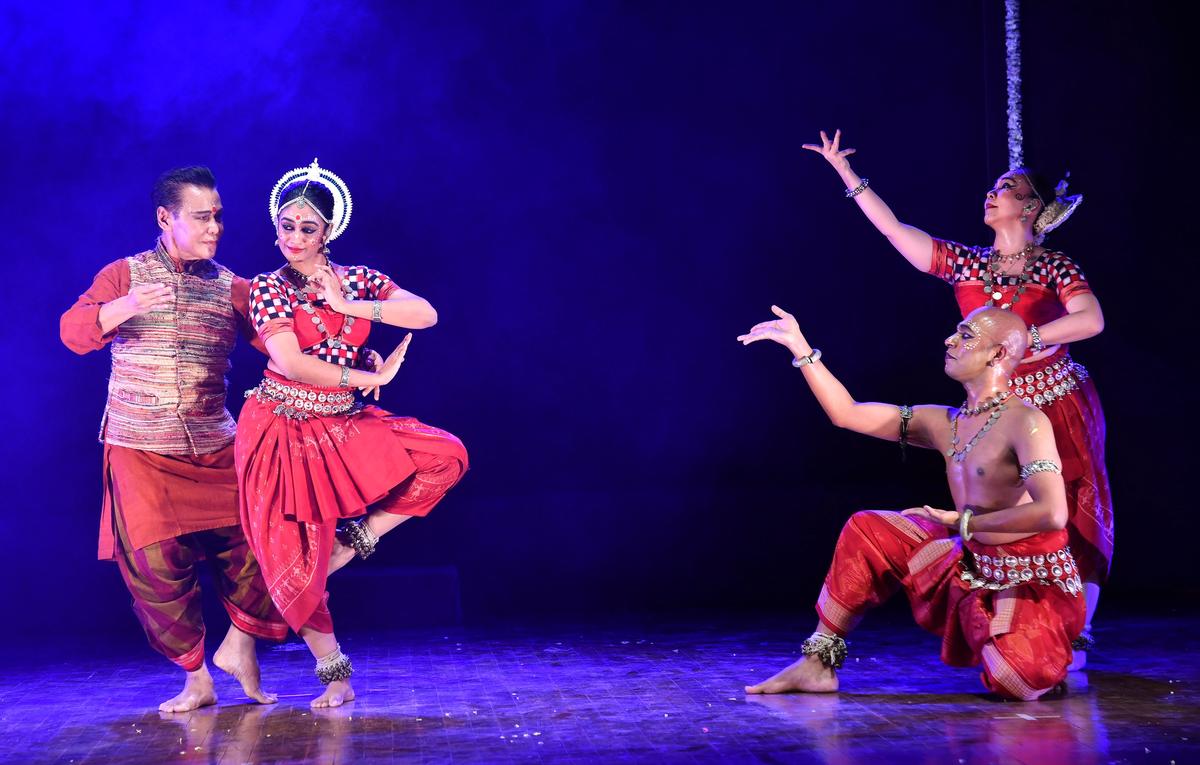
Ramli Ibrahim and his sutra dancers presenting invitations for Odissi.
While acknowledging that there are endless possibilities in Odissi, Ramli advises dancers to be a little more sexy. “It’s a tough world to survive in, the world of 45-second reels. You can’t relax at this time. You must understand the nuances,” he said.
an invitation to odyssey
Ramli’s ‘An Invitation to Odissi’ opens with Mangalacharana (Ganga Taranga), a rousing piece paying homage to the sacred river Ganga. This was followed by Stai, an intricate dance showcasing the fundamental movements of Odissi, highlighting the technical mastery of the dancers.
Ashtapadi Lalita Lavanga, a love poem by Jayadeva’s Gita Govinda, was presented with an interplay of expressions and intricate footwork. The performance concluded with Suryashtak, a tribute to the Sun God, epitomizing the spiritual fervor and grace that defined the Debaprasad Das style. Ramli’s reworking of these classical pieces not only preserved the tradition but also infused them with contemporary sensibilities, making the performance accessible to modern audiences while maintaining its authenticity.
Ramli played the role of sutradhar (narrator), guiding the audience through each piece, explaining the nuances of dance movements, expressions and the storytelling tradition rooted in Odissi. His presence on stage as a storyteller also added depth and engagement to the performance, immersing the audience in the emotions and mythology expressed through each dance.
Dancers Geetika Sri, Tan Mei Mei and Wickeswaran performed with precision and passion under Ramlee’s direction. Each of them shone individually, yet together, they wove a seamless narrative that captured the essence of Debprasad Das’s style. He received a standing ovation from the entire house
Siya Ram Premiere
Nrityantar dance group premiered their latest production Siya Ram to a standing ovation at Naman Utsav. It was a dance drama highlighting the timeless story of love, devotion and valor between Sita and Ram based on the rich backdrop of Ramayana.
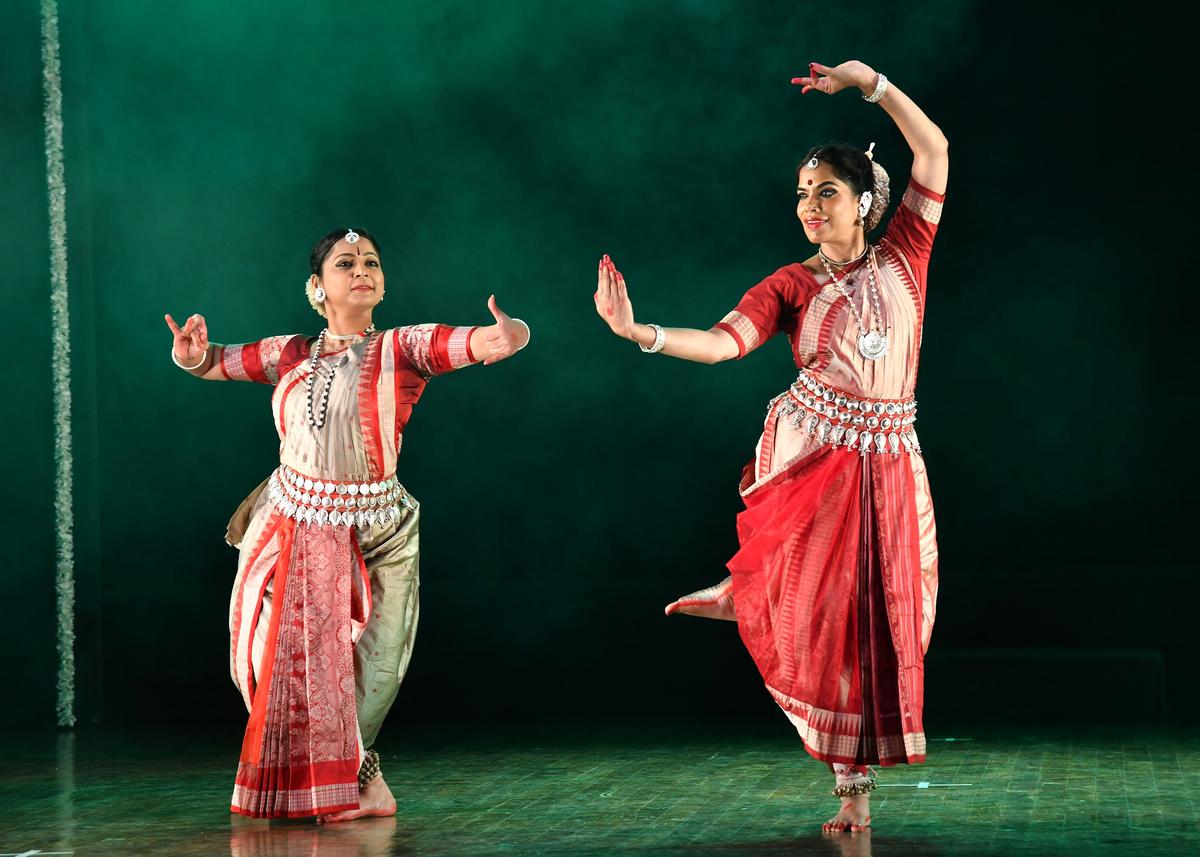
Rashmi Divakaran (Ram) and Madhulita Mahapatra (Sita) in a romantic scene in Siya Ram.
The story started in Ravana’s Ashoka Vatika where Sita was spending her beautiful time with Ram. The flashback of the first meeting of Ram and Sita was depicted with excellent choreography on the lyrical Pallavi. The swayamvar scene gathered a lot of energy as several lovers including Ravana (played by Sahana Raghavendra Maiya) failed to string Shiva’s bow while Rama easily broke it, signifying his victory and love for Sita. Was a symbol.
Rashmi Divakaran gently embodied the divine aura of Ram. This was followed by a festive Oriya song depicting Ram’s return to Ayodhya that captured the joyous mood. As the story progresses, the intense couplet between Queen Kaikeyi (played by Nandana Sasikumar) and Manthara (played by Dr. Anupama Kumar), who cunningly convinces the queen to demand Rama’s exile, takes a dramatic turn. Marked. Manthara’s manipulative tactics, portrayed with slow, conspiratorial movements and intense music, contrasted with Sumana Das’s portrayal of the mournful King Dasharatha.
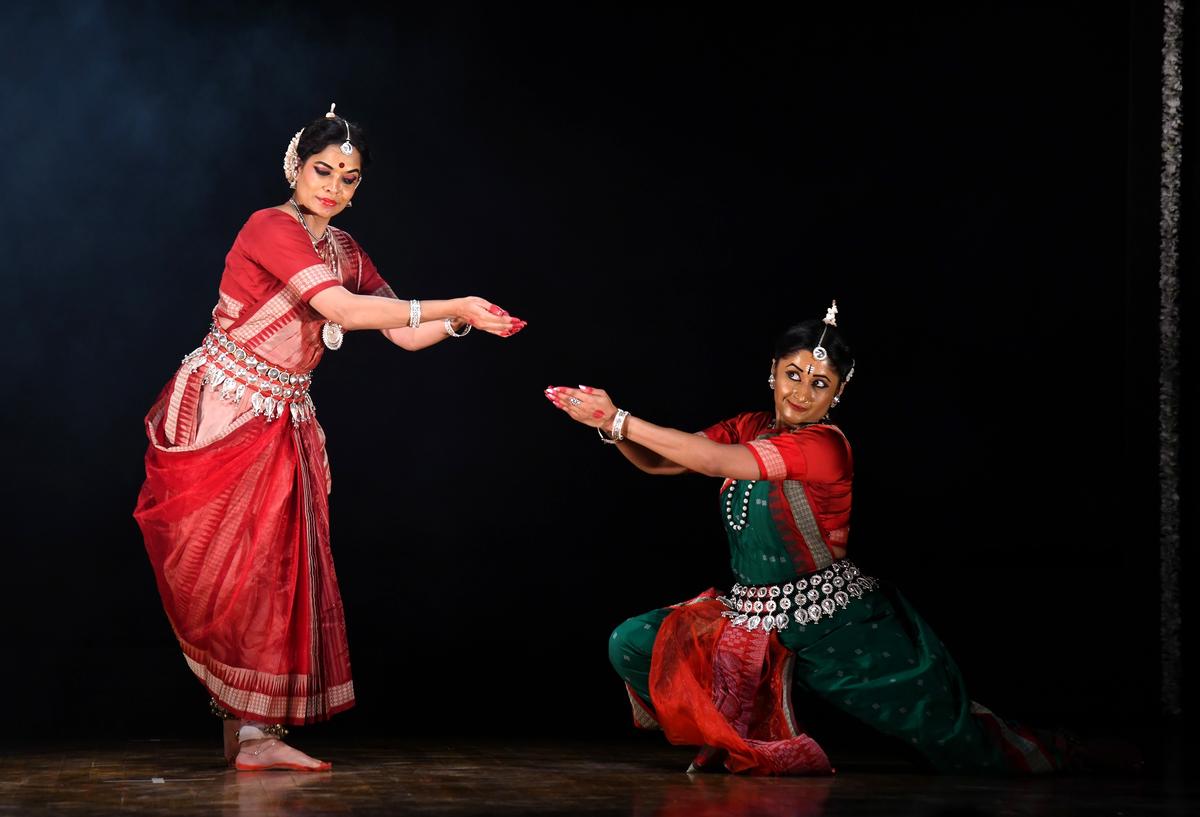
Sahana Raghavendra Maiya (Ravana) is begging for alms from Sita in the guise of an ascetic.
The scenes from their life in the forest depict the simple and happy existence of Rama, Sita and Lakshmana, reflecting the harmony and peace of their exile. Soorpanakha, played by Soni Tarasia, made a grand entry mixing comedy with intense drama. At first she appeared as a beautiful maiden, after being rejected by Rama and Lakshmana she rapidly revealed her demonic form, followed by the climactic moment where Lakshmana cut off her ears and nose.
The encounter with the golden deer, where the demon Marich transformed into a captivating creature to tempt Rama, was mesmerizing, leading Sita to pray earnestly to Rama to capture it. Angelina Avni brought the golden deer Maricha to life with dance and agility on the stage. Tension rises when Rama leaves and Marich’s treacherous cry sets the stage for Ravana’s abduction of Sita.
Sahana Raghavendra Maiya’s portrayal of Ravana transforming from a disguised saint to his true, dangerous form was thrilling, with his powerful dance and expressions symbolizing arrogance and malice. The confrontation between Ravana and the great vulture Jatayu was fascinating. Brave Jatayu, depicted through elaborate dance postures, fought Ravana to save Sita, but was badly injured. The sad music that accompanied Jatayu’s fall added a poignant layer of sacrifice to the scene.
The story then focuses on the efforts of Hanuman, who leaps into the sea to find Sita in Ashoka Vatika, reassuring her and promising her the arrival of Rama. Aditi Das’s portrayal of Hanuman was full of energy and devotion, and provided a comic relief. The final battle between Rama and Ravana was a spectacular spectacle with vigorous dance movements, rhythmic use of traditional drums and energetic choreography, culminating in Rama’s victory and Ravana’s defeat.
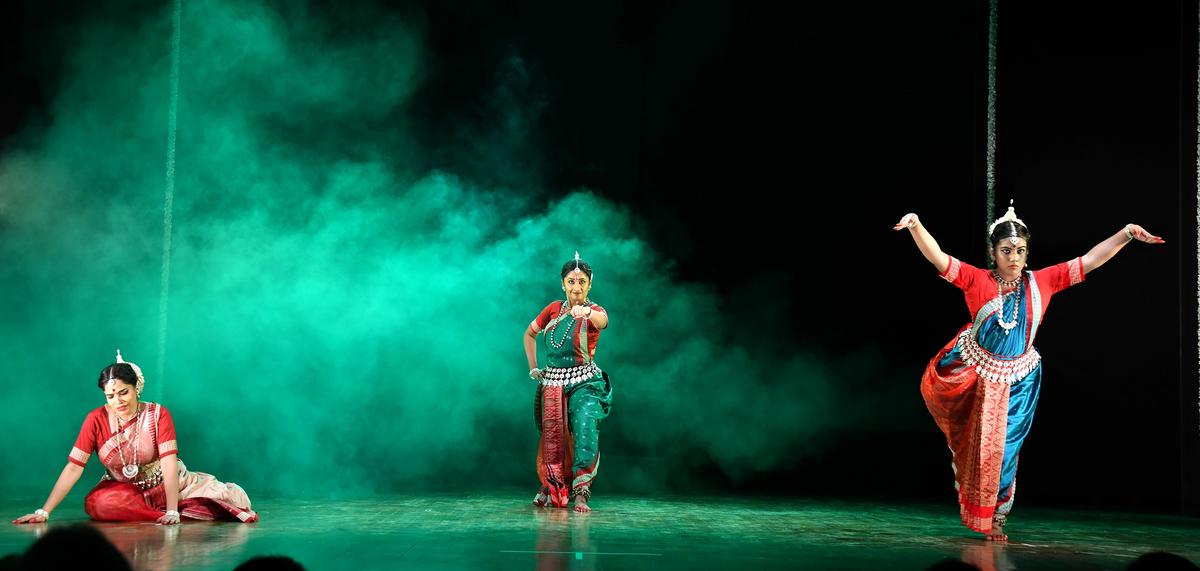
Jatayu-Ravana war scene in Siya Ram
The reunion of Ram and Sita, marked by a soulful song, brought a sense of closure and emotional satisfaction, which was celebrated through a lively group dance. Madhulita Mahapatra as Sita, Rashmi Divakaran as Ram, Prishna Sinha as Jatayu, Dr. Anupama Kumar as Manthara, Angelina Avni as Marich, Soni Tarsia as Surpanakha to Sahana as Ravana. Till Raghavendra Maiya, each dancer gave a subtle performance. The choreography, music and execution reflect the depth of his characters and the epic narrative.
Directed and choreographed by Madhulita Mohapatra, with music composed by Rupak Kumar Parida and beats by Guru Dhaneshwar Swain, Siya Ram: The Eternal Saga was an excellent retelling of the epic. It can leave an indelible impression on the audience of the eternal values of love, faith and victory of good over evil.
odc performance
Odissi Dance Center (ODC) dancers, under the guidance of Devjani Sen, a disciple of the renowned Kelucharan Mohapatra, presented two dance pieces, Rasmanjari Pallavi and Hanuman Chalisa, each of which offered a glimpse of the troupe’s approach to Odissi dance.
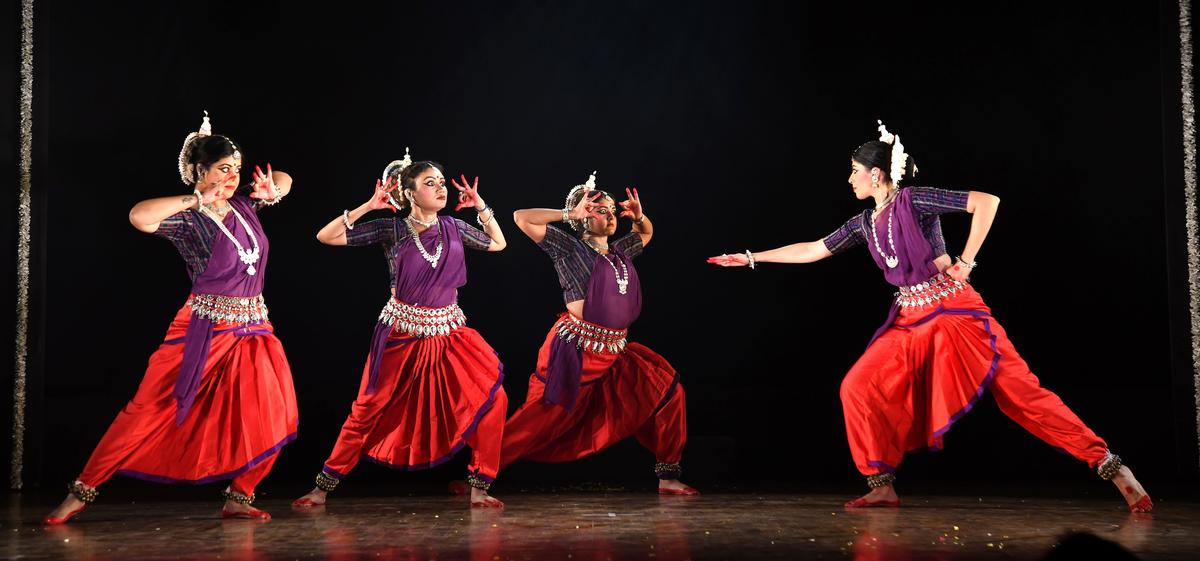
Odissi Dance Center dancers performing at Naman 2024.
In Rasmanjari Pallavi, their opening piece, set to Raga Khamaj and composed by Binod Panda, the dancers maintained the beauty and fundamental technique characteristic of Odissi with decent coordination between the dancers. Devjani’s latest choreography on Hanuman Chalisa, was set in Raaga Malika and Taal Malika, with music composed by Sukant Kumar Kundu. With clear narrative intent, the dancers managed to convey the essence of the composition with coordination and energy. Aditi Rajpal, Akshata N. Tirumale, Anavi Malik and Sohini Guha performed for ODC.
published – October 17, 2024 09:47 PM IST


